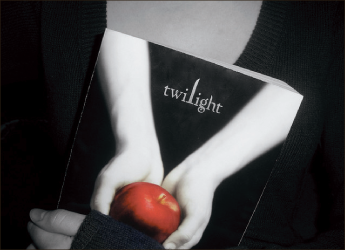Monsters, vegetarians and saps

I am a creature of the night, a true hunter.
A man walks home after dark — alone. Now is the perfect time to strike, to feel his hot blood fresh on my tongue. My throat convulses involuntarily, and the ever-present thirst grows unbearable. I pass my tongue over my lips, struggling to push back an overwhelming urge to lash out.
I draw a shaking hand across my mouth — slowly, almost absently — as I gaze down at the pale skin, the mangled throat. Every fiber of my being thirsts for blood, and sometimes the temptation is too much. I am only human.
But do not worry. I am usually a good bloodsucker…
What happened to that age-old portrait of a deadly, irredeemable monster that drank the blood of its innocent victims?
It has been replaced with what seems like a watered-down, pathetic version of the ancient legend. Authors like Stephanie Meyer and Richelle Mead continuously cater to popular culture’s seemingly insatiable obsession with the idea of “friendly vampires.”
We are all well familiar with the teen vampire love story. What is it that draws readers again and again to the forbidden love between human and monster?
Well, I suppose it could be an overwhelming fascination with the concept of everlasting love.
In Stephanie Meyer’s Twilight Saga —which will soon reach millions of viewers once again as the final movie of the trilogy, Breaking Dawn: Part 2, hits theatres Nov. 16 — a very weak, very human girl falls in love with a century-old vampire. But humans and vampires do not live happily ever after — they cannot. The human will eventually die, and either the love or the vampire will die with her.
Yet, what if both of them lived forever? When human transforms into vampire, love can live forever — never ceasing, never dying. It is the picture of the perfect relationship between two beings. But it is still a little unrealistic.
Or readers could be drawn by the idea that every monster is redeemable, despite how evil he may seem.
L.J. Smith does not make the mistake of separating supernatural from horror in her best-selling book series entitled Vampire Diaries. Originally published in 1991, years before Meyer’s work ever saw a bookshelf, the series juxtaposes two very different takes on vampires: the vegetarian, pathetically romantic Stefan Salvatore and his ruthless, deadly-powerful brother, Damon.
The female protagonist of the story, Elena Gilbert, immediately falls for the broody, mysterious and initially unattainable Stefan.
But she also struggles with feelings for Damon. Who would not? He is hot and dangerously attractive — not to mention his hypnotic powers of compulsion that can bend anyone to his will. But even more compelling is this lingering sense that there is some shred of humanity left within him. What if her love could bring this humanity out, could save him?
Despite a very distasteful habit for graphic images, the American version of the television show Being Human does a fair job of depicting the portrait of an irredeemable monster trying to be good. The show, which premiered on Syfy in January 2011, focuses on the lives of three roommates who are not all they appear to be.
The main protagonist, Aidan Waite, constantly struggles with his vampiric nature, but sometimes he falls back into temptation. He realizes that he is a monster, but he still desperately wants to be good — to be a little more human.
Both reasons are possible, I guess. They are both symptoms of the fallen world. Love seems fleeting on earth, so we constantly yearn for that true, everlasting love that is not of this world. Because humanity has fallen, we also see countless examples of broken people who seem irredeemable.
Here is the true lesson taught by these “friendly vampire” stories: No one is beyond redemption.

